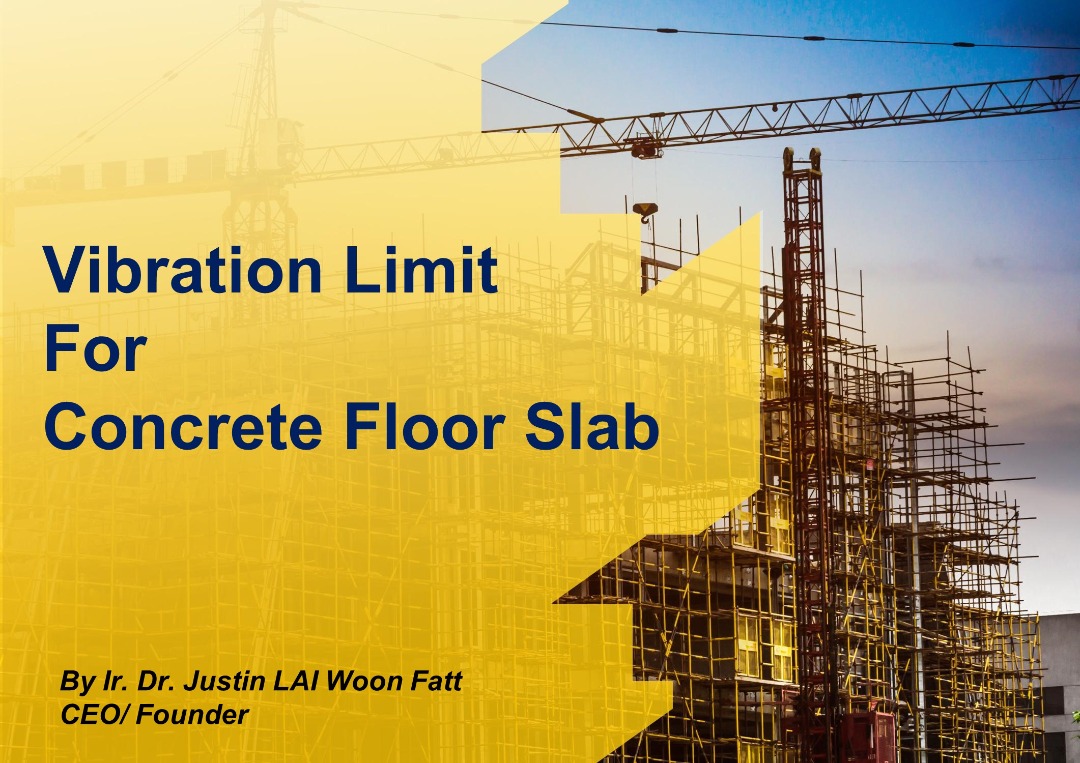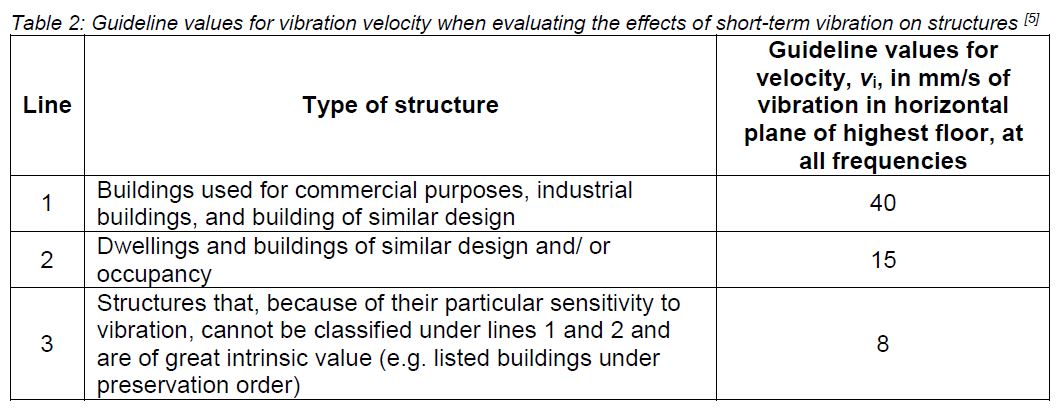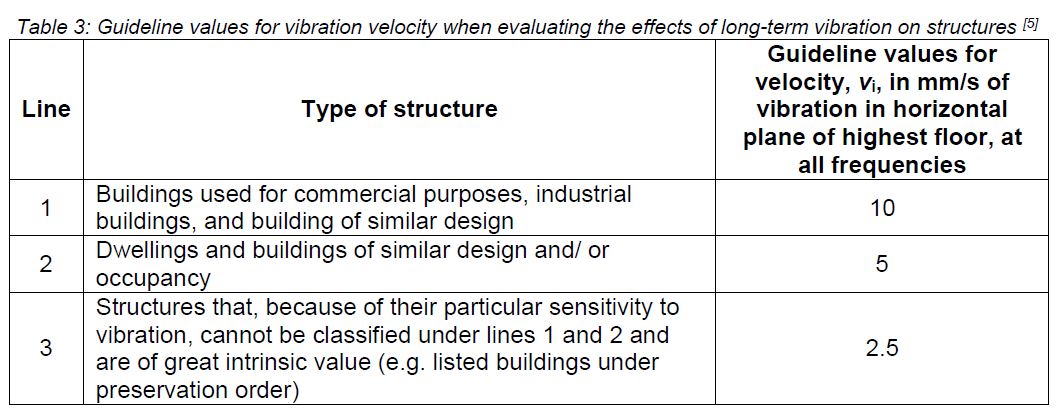Author: Ir. Dr. Justin LAI Woon Fatt | 30 January, 2022
The oscillation motions experienced by the building and its occupants during normal day-to-day activities are known as floor vibrations. The vibration is usually moving vertically up and down. However, horizontal vibrations are possible as well [1]. Vibration can be caused by a variety of factors in a building, including external sources such as industrial, construction, and transportation activities as well as internal sources. According to DIN 4150-3, a vibration can be classified as short-term vibration or long-term vibration. Short-term vibration is a vibration that does not happen frequently enough to lead to structural wear and does not cause resonance in the structure that is being assessed while long-term vibration is defined by DIN 4150-3 as all types of vibration that are not covered by the definition of short-term vibration. Another view from the Department of Environment Malaysia is, vibration can be classified as continuous, impulsive such as shocks or intermittent. Continuous vibrations have magnitudes that vary or remain constant over time while intermittent vibrations have magnitudes of each event that are either constant or vary over time [2].
To measure the vibration, there are three types of parameters can be selected, namely acceleration, velocity, and displacement. Typically, the vibration parameters are measured in metric units in accordance with ISO standards as tabulated in Table 1. In fact, the form and period of the vibration remain the same regardless of the displacement, velocity, or acceleration considered. The main difference lies in the phase difference between the amplitude-time curves of the three parameters as shown in Figure 1 [3]. Vibration velocity is the most common parameter used to measure vibration levels [4]. It is often referred to as peak particle velocity (PPV). The stresses that arise as stress waves propagate through the material are proportional to the particle velocity.
Generally, criteria and limits for vibration are different based on the type of vibration and buildings. In this article, standard DIN 4150-3 will be discussed mainly on industrial and commercial buildings. Numerous empirical measurements of the vibration velocity in building foundations have produced results that can be used to evaluate short-term structural vibration. Evaluation based on DIN 4150-3 uses the peaks of the two horizontal components as a starting point where the vibration measured in the plane of the highest floor resting on exterior walls also contributes significantly to this evaluation. Other than that, based on measurements made on the building foundation, evaluations made in accordance with this standard are depending on the maximum absolute value of the velocity signals for each of the three components, x, y, and z directions, of the unweighted velocity signals.
Table 2 below demonstrates guideline values for vibration in the plane of the highest floor of various types of buildings for short-term vibration. Based on the experience, assuming that these values are followed, damages that decrease the usefulness of the structure might not happen. In addition, surpassing the guideline values in Table 2 does not always result in damage. If damage nevertheless happens, there are probably additional causes. However, if they are significantly exceeded, further research is required [5].
For various building types, Table 3 provides guidelines for the highest values of the two horizontal components measured on the top floor for long-term vibration. Same as short-term vibration, according to experience, the damage will not happen if these values are implemented. In fact, the damage is not always caused by slightly exceeding the values in Table 3. If they are significantly exceeded, the stresses may be identified and assessed. Besides, the maximum values can occur on floors other than the top floor or the foundation if a building is subjected to harmonic vibration. In these situations, the values listed in Table 3 also can be adopted.
In conclusion, the vibration limit varies based on the type of vibration and buildings. In this article, short-term and long-term vibrations are mainly discussed based on standard DIN 4150-3. According to Table 2 and Table 3 above, it can be concluded that the vibration limit at the horizontal plane of the highest floor at all frequencies for industrial and commercial buildings for short-term vibration and long-term vibration is 40 mm/s and 10 mm/s respectively. Hence, it is recommended that the vibration limit for concrete floor slabs adhere to the guideline values to prevent unforeseen damage.
Ir. Dr. Justin LAI Woon Fatt
CEO/ Founder
IPM Group
References:
[1] SteelConstruction.info, “Floor vibrations.” Retrieved on 29th January 2022 from https://www.steelconstruction.info/Floor_vibrations
[2] Guidelines for Environmental Vibration Limits and Control. (2021). Department of Environment Malaysia.
[3] Brüel & Kjær, “Measuring Vibration: The Complete Guide.” Retrieved on 29th Jan 2022 from https://www.bksv.com/en/knowledge/blog/vibration/measuring-vibration
[4] A. Ansell and J. Silfwerbrand, “The vibration resistance of young and early-age concrete,” Struct. Concr., vol. 4, no. 3, pp. 125–134, Sep. 2003
[5] DIN 4150-3, Structural vibration part 3: Effects of vibration on structures, 1999.




